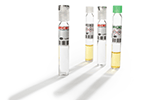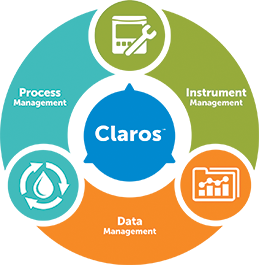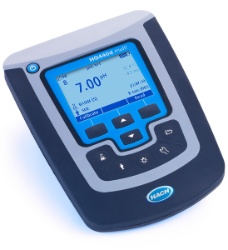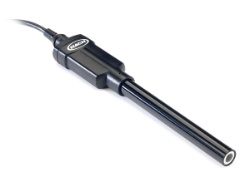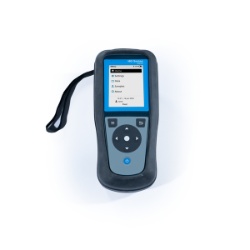-
Products
-
Lab Instruments
Other Instruments
-
Lab Meters and Probes
Calibration Standards Radiometer ProbesOther Reagents
- Chemistries, Reagents, and Standards
-
Online Analysers
Ammonium Analysers Ammonia Monochloramine Chlorine Analysers
- CL17sc
- CL10sc Amperometric
- 9184 sc Amperometric
- Ultra Low Range CL17sc Colorimetric Chlorine Analyser
EZ Series Analysers- Iron
- Aluminium
- Manganese
- Phosphate
- Chloride
- Cyanide
- Fluoride
- Sulphate
- Sulphide
- Arsenic
- Chromium
- Copper
- Nickel
- Zinc
- Ammonium
- Total Nitrogen
- Total Phosphorus
- Phenol
- Volatile Fatty Acids
- Alkalinity
- ATP
- Hardness
- Toxicity
- Sample Preconditioning
- Boron
- Colour
- Nitrate
- Nitrite
- Silica
- Hydrogen Peroxide
- EZ Series Reagents
- EZ Series Accessories
- EZ sc Series Inorganics
- EZ sc Series Metals
- EZ sc Series Nutrients
-
Online Sensors and Controllers
Digital Controllers (Transmitters) Controllers (Analogue)
- SC4500
- Orbisphere 366x Ex
- Orbisphere 410/510 Carbon Dioxide
- Orbisphere 410/510 Oxygen
- Orbisphere 410/510 Ozone
- Orbisphere 51x Hydrogen
Single, Dual, Multi-parameter Online Panels pH & ORP Sensors- 1200-S ORP
- 1200-S pH
- 12mm pH/ORP
- 8362 sc High Purity
- Combination pH/ORP
- Differential pH
- Digital Differential ORP
- Digital Differential pH
- LCP ORP
- LCP pH
Conductivity Sensors- 3400 Analogue Contacting
- 3400 Digital Contacting
- 3700 Analogue Inductive
- 3700 Digital Inductive
- 3798 sc Electrodeless
- 9523 Cation Conductivity
- 9525 DCCP System
-
Automated Lab Systems
Robot Systems
- Multiparameter Online Panels
- Claros Water Intelligence System
- Samplers
- Test Kits & Strips
-
Lab Equipment and Supply
Apparatus
- Brushes
- Clamps, Rings & Stands
- Crucibles
- Crucibles & Casseroles
- Dispensers & Droppers
- Grab Samplers
- Oil and Grease
- Other Apparatus
- Pipet Aids
- Pipettes
- Racks
- Stir Bars
- Tubing
- Weighing Accessories
General Lab Consumables Glassware/PlasticwareInstruments -
Microbiology
Accessories and Chemicals Dehydrated MediaLabware
- Electrochemistry
-
Lab Instruments
- Parameters
-
Software Solutions
-
Claros Water Intelligence System
Product Pillars Process Management
- Solutions For:
- BOD/COD Removal
- Nitrification/Denitrification
- Phosphorous Removal
- Sludge Management
Data Management- Solutions For:
- Collection
- Visualization & Analytics
- Reporting
- Data Accuracy
Instrument Management- Solutions For:
- Maintenance
- Troubleshooting
- Remote Access
- Lab and Process Comparison
Industry Challenges Regulatory Compliance Cost Savings Remote Operations Process Optimisation Equipment Maintenance
-
Claros Water Intelligence System
- Industries
- Service
- News & Events
Ireland
Choose your country or region:
Europe
Americas
Asia - Australasia
- Australia
- Mainland China
- India
- Indonesia
- Japan
- Malaysia
- New Zealand
- Philippines
- Singapore
- South Korea
- Thailand (Thai)
- Taiwan
- Vietnam
Middle East - Africa
Ammonia & Ammonium
What is Ammonia?
Ammonia is a colourless, pungent gaseous compound of hydrogen and nitrogen (one nitrogen atom and three hydrogen atoms, NH 3) that is highly soluble in water.
Ammonia is formed naturally as a product of the microbiological decay of nitrogenous organic matter (animal and plant protein). It can also be produced for use in fertilisers, or for use in the production of plastics, pharmaceuticals and other chemicals.
Ammonia in groundwater is normal, due to microbiological processes. However, the presence of ammonia nitrogen in surface water usually indicates domestic pollution. Excess ammonia can damage vegetation and is incredibly toxic to aquatic life, especially at elevated pH and temperature levels.
Aqua Ammonia
For various applications, ammonia is dissolved in water to produce “aqua ammonia.” Bulk aqueous ammonia (aqua ammonia) solutions are unstable and the ammonia concentration may decrease during transportation or during storage. Therefore, delivered solutions are billed based on the ammonia concentration delivered to the facility or end-user.
What is Ammonium?
Ammonium is a compound containing one nitrogen and four hydrogen atoms (NH 4 +). While ammonia is a neutral non-ionised molecule (weak base), ammonium is an ion carrying a positive charge. In addition, ammonia emits a strong odour, but ammonium does not smell at all.
The major factor that determines the proportion of ammonia to ammonium in water is pH. The activity of the ammonia is also influenced by ionic strength and temperature of the solution. It is important to remember that while molecular ammonia can be harmful to aquatic organisms, ammonium ion is basically harmless. In the water industry, it is important to know the concentrations of hydrogen bound nitrogen. Therefore, terms ammonia and ammonium are used interchangeably, depicted as NH 3 -N or NH 4 -N correspondingly, and normally expressed in mg/L or PPM of N.
The chemical equation that drives the relationship between ammonia and ammonium is:
NH 3 + H 2O <-> NH 4 + + OH -
When the pH is low, the equilibrium is driven to the right and when the pH is high, the equilibrium is driven to the left. In general, at room temperature with a pH less than 6, the portion of ammonia‐N as NH 3 is very low and almost all ammonia nitrogen is present as NH 4 +. At a pH around 8, the portion of NH 3 is 10 percent or less, and at a pH slightly above 9 it is about 50 percent. Once the pH is > 11, all ammonium ions in solution will be converted to the molecular form of ammonia. The activity of aqueous ammonia is much lower at low temperatures.
Why Monitor Ammonia?
Ammonia is used as both a reagent and as a measurement parameter in several areas of water and wastewater treatment.
- Naturally occurring ammonia is monitored in source water.
- During the chloramination disinfection process, ammonia is combined with chlorine to treat drinking water and maintain a longer-lasting residual in distribution systems.
- Sometimes ammonia is used for pH control, such as in the pharmaceutical industry.
- Ammonia is widely monitored in wastewater nitrification and denitrification processes.
While generally harmless at low concentrations, high concentrations of ammonia can cause damage and pose health risks. Therefore, ammonia levels must be properly monitored and maintained.
At Hach ®, find the testing equipment, resources, training and software you need to successfully monitor and manage ammonia levels in your specific process application.
Featured Products for Monitoring Ammonia
Hach offers many of the leading spectrophotometers in the water analysis market.
Learn MoreHach’s easy to use, robust, portable instruments are built to handle the unique stresses present in the field.
Learn MoreLaboratory Ammonia ISE Basic Kit, HQ440d
The Hach HQ440D Laboratory Multi-Meter is an advanced laboratory meter that takes the guesswork out of measurements.
Learn MoreIntellical Ion Selective Electrodes (ISENH)
HQD ® meters connect with smart IntelliCAL ® electrodes that automatically recognize the testing parameter.
Learn MoreThe HQ Series is for water quality professionals who want to perform electrochemical analysis for field and lab environments.
Learn MoreHach's Amtax sc Online Analyser with gas sensitive electrode, is designed for the high precision determination of ammonium concentration directly at the treatment process (outdoor installations).
Learn MoreThe EZ Series Online Analysers offer multiple options to monitor ammonium in water.
Learn MoreHach's Digital, Ion-selective A-ISE sc Probe is designed for the determination of ammonium concentration directly in the medium.
Learn MoreHach's Digital AN-ISE sc Combination Sensor for ammonium and nitrate carries out continuous direct measurements using an ion-selective electrode.
Learn MoreSL1000 Portable Parallel Analyser (PPA)
The Hach SL1000 Portable Parallel Analyser (PPA) performs the same tests with less than half the manual steps.
Learn MoreHach is dedicated to providing high-quality reagents for routine and challenging water analysis.
Learn More
Which Processes Require Ammonia Monitoring?
Drinking Water Treatment
Gaseous ammonia and its concentrated solutions must be handled with care and in accordance with regulatory requirements. This is due to highly corrosive properties that pose serious health risks ranging from mild eye or skin irritation to chemical burning, depending on the concentration. Additionally, off-gassing ammonia can cause aesthetic problems like objectionable taste or odor.
When ammonia is not used for disinfection, its presence in a distribution system may indicate leaching from materials used in the pipework construction or water contamination, due to damage in the system. When unwanted ammonia combines with chlorine, it diminishes the disinfection strength of chlorination.
Chloramination
In some disinfection processes, ammonia is intentionally combined with chlorine to produce monochloramine. Though free chorine is a more powerful disinfectant, monochloramine (bonded ammonia and chlorine) has a stronger residual so it remains in the distribution system longer, thus ensuring disinfection is maintained all the way to the tap. Furthermore, chloramines react less intensely with various impurities in raw water, particularly organic substances, thus minimising the formation of some carcinogenic disinfection by-products (DBP). To optimise the chloramination process, it is important to monitor the formation of the target disinfectant species, while preventing the formation of less desirable dichloramine or trichloramine (nitrogen trichloride). Monochloramine testing is used together with a free ammonia determination to ensure formation of the right disinfectant and reduce raw material costs by preventing the overfeeding of chlorine and/or ammonia.
Free Ammonia
Ammonia that has not bonded with chlorine during chloramination disinfection is referred to as free ammonia (both NH 4 + and NH 3). At a neutral pH and ambient temperature, almost all free ammonia exists as NH 4 +. As the pH and temperature increase, the amount of NH 3 increases and the amount of NH 4 + decreases. When chloraminated water is released, free ammonia levels increase as monochloramine reacts with various organics and bacteria in the distribution system water, satisfying the chlorine demand. Increased free ammonia levels indicate the onset of nitrification. A sudden drop in free ammonia suggests that nitrification is in process and nitrite is being formed. The free ammonia value is useful in determining the amount of free chlorine needed to increase the monochloramine residual at a booster station. The free ammonia level can be reduced by adding free chlorine at a ratio of 5:1 as Cl 2:N to guide the process and help minimise nitrification potential.
Total Ammonia
Total ammonia is the sum of all ammonia nitrogen present in the form of monochloramine (NH 2Cl), other chloramines, ammonium ion (NH 4 +), and molecular ammonia (NH 3). This parameter may serve as a primary or secondary verification to maintain the chloramination process under control.
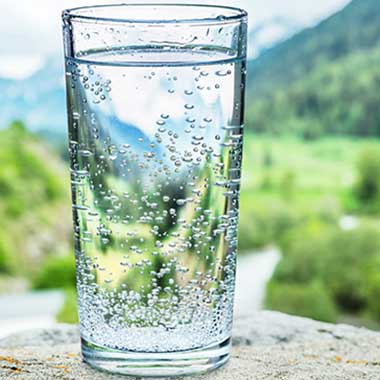
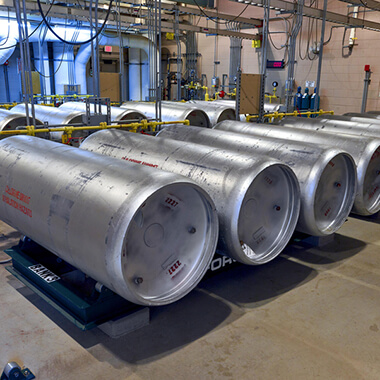
Surface/Groundwater Treatment
Ammonia is formed as a by-product when bacteria breaks down natural materials in the soil. High ammonia concentrations can be caused by iron-rich soil, proximity to a forest or fertiliser and fecal contamination.

Wastewater Treatment
During wastewater treatment, ammonia levels can reach extremely high concentrations as a result of bacterial action. Ammonia is first converted to nitrate through the nitrification process so that it can be reduced to atmospheric nitrogen (N 2) by denitrification. Learn more about municipal wastewater treatment. At high concentrations and pH, ammonia can be toxic to sludge digestion microbes. Furthermore, to prevent damage to aquatic life, it is crucial to monitor and remove ammonia from wastewater effluent before it is released into natural bodies of water.
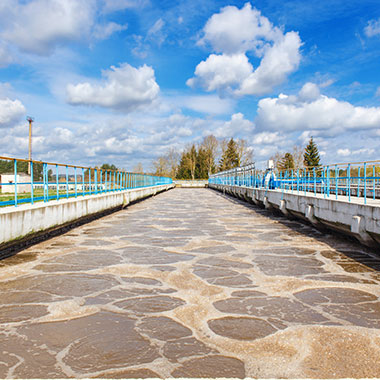
Aquaculture
As a waste product of aquatic life, ammonia can be toxic to fish and aquatic plants at levels as low as 0.5 mg/L. In established aquariums, ammonia can be rapidly converted to nitrite and eventually nitrate. Most aquariums aim to have zero ammonia present.
In natural aquatic environments, high ammonia levels can result in excess algae growth that blocks sunlight, impairing sight-feeding and photosynthesis.
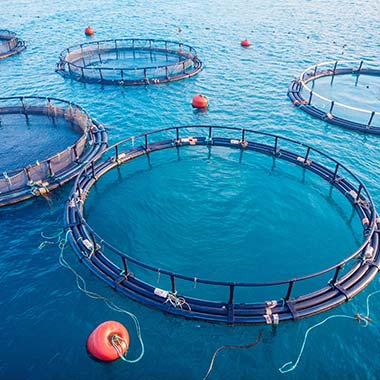
Agriculture
Because plants cannot fix nitrogen directly from the atmosphere, they rely on nitrogen-fixing bacteria to convert nitrogen into ammonia. Nitrogen in the form of ammonia can then be used by plants to create other essential organic molecules needed by complex organisms. To aid or enhance this natural process (which is part of the nitrogen cycle), ammonia is often added to fertilisers. For example, hydroponic nutrient solutions introduce nitrogen as an ammonia salt. Ammonia can also be present in soil due to urea dosing and its sequential decomposition.

Pharmaceutical Manufacturing
In the pharmaceutical industry, ammonia is used for pH control and its solution is used to regenerate weak ion exchange resins and for pH adjustment.

How is Ammonia Monitored?
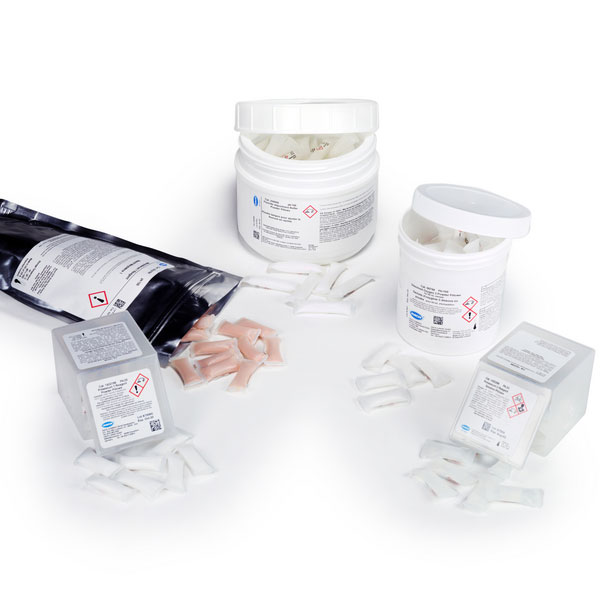
Salicylate Method
The salicylate method is a variation of the well-known phenate method, but it has an advantage of being free from mercury salts and phenol. This method is most useful for low range ammonia nitrogen determinations. Although the procedure involves multiple steps before a final green colour is developed, all reagents are contained in convenient powder pillows (salicylate reagent powder pillows and alkaline cyanurate powder pillows) or in LCK cuvette tests.
- Ammonia compounds react with hypochlorite to form monochloramine.
- The monochloramine then reacts with salicylate to form 5-aminosalicylate.
- Oxidation of 5-aminosalicylate is carried out in the presence of a catalyst, nitroprusside (also called nitroferricyanide), which results in the formation of indosalicylate, a blue-coloured compound. The blue colour is masked by the yellow colour (from excess nitroprusside) causing a green-coloured solution. The intensity of the resulting green colour is directly proportional to the ammonia concentration in the sample.
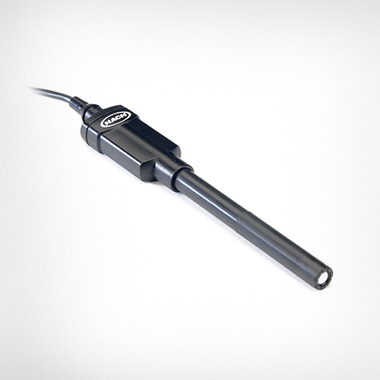
Gas Sensing Probe
The ammonia electrode measures ammonia gas in aqueous solutions, or ammonium ions that have been converted to gas by the addition of a strong base. The electrode is a complete electrochemical cell consisting of a glass pH electrode and a reference electrode. The gas-permeable membrane separates the sample from a thin layer of electrolyte that is pressed between the pH bulb and the membrane. At high pH, ammonium ion is converted to ammonia gas. The gas diffuses through the membrane and causes a pH change in the thin layer of electrolyte. The potential across the pH glass changes as a result of the pH change and the electrode measures the change in potential. The measured pH change is proportional to the ammonia concentration in the solution.
Benchtop/Portable:
IntelliCAL ® ISENH3181 Ammonia (NH3) Ion Selective Electrode (ISE)
Online:

Nessler Method
In the ammonia test, Nessler reagent (K 2HgI 4) reacts with the ammonia present in the sample (under strongly alkaline conditions) to produce a yellow-coloured species. The intensity of the colour is in direct proportion to the ammonia concentration.
2K 2HgI 4 + NH 3 + 3KOH → Hg 2OINH 2 + 7KI + 2H 2O
Benchtop:
Portable:
Online:
Frequently Asked Questions
What methods can be used to report ammonia in wastewater to the EPA?
Ammonia nitrogen can be measured using a spectrophotometer (or colorimeter) or an ammonia ion selective electrode (ISE). Provided below are accepted or equivalent United States Environmental Protection Agency (USEPA) methods for wastewater analysis.
Nitrogen-Ammonia Nessler Method 8038 - USEPA accepted for wastewater analysis (distillation required), Method 350.2.
Nitrogen-Ammonia TNTplus Method 10205 - Equivalent
Nitrogen Ammonia Ion Selective Electrode (ISE) method 10001 and 10002 - These procedures can be used for standard methods for the examination of water and wastewater 4500-NH3 E for USEPA NPDES reporting.
Why are LCK ammonia salicylate reagents EPA equivalent but the TNT Amver salicylate reagents are not?
LCK ammonia cuvette tests LCK303, LCK304, and LCK305 are considered equivalent for United States Environmental Protection Agency (USEPA) wastewater analysis and reporting. The ammonia reagent sets TNT Amver are not considered equivalent for USEPA reporting.
Hach has created an EPA formatted method with side-by-side support data to follow the MUR and state equivalency for the TNTplus ® ammonia salicylate reagents. This has not been done for the older TNT Amver salicylate reagents. If a user wants to consider the older TNT ammonia tests for regulatory compliance, they can still discuss with their regulatory authority.
Reference EPA formatted method, "TNTplus Ammonia-Spectrophotometric Measurement of Ammonia Nitrogen and Total Kjeldahl Nitrogen in Water and Wastewater" for information on USEPA equivalency to 350.1 and 351.1.
Do the Nessler and Salicylate methods detect ammonia or ammonium?
Both the Nessler and salicylate methods are based on a reaction with molecular ammonia in a basic solution. If the original sample contained ammonium ions, the basic reagents would convert it to molecular ammonia and then it will react and contribute to the final test result. However, these simple ammonia tests do not include the ammonia that is in organically bonded amino groups. A true total ammonia test would include chloramines and require heating the sample in an acidic solution to digest the organic ammonia.
Since the test result is a sum of both molecular ammonia (NH 3) and ionic ammonium (NH 4 +), the preferred unit for reporting is as nitrogen (NH 3 -N). Most Hach colorimeters and spectrophotometers have the option to convert the test results between nitrogen, ammonia, and ammonium. This does not change the chemistry of the test; it only changes the units. It should be noted that while there is the same amount of nitrogen in ammonia and ammonium, the stoichiometric ratio of N to NH 3 and NH 4 + are not exactly equal due to different number of the hydrogen atoms.
- To convert from mg/L NH 3 -N to mg/L NH 3, multiply by 1.216.
- Calculated from the mass of NH 3 divided by the mass of N (17.034 ÷ 14.01 = 1.216).
- To convert from mg/L NH 3 -N to mg/L NH 4, multiply by 1.288.
- Calculated from the mass of NH 4 + divided by the mass of N (18.042 ÷ 14.01 = 1.288).
What does the Amtax sc analyser actually measure?
When the measurement is displayed on the Amtax sc, the units are "NH 4 -N" or "NH 4", which means that the instrument measurement is expressed as ammonium and reports the values as nitrogen (also described as "NH 4 as N"), or as ammonium. There is no difference between expressing ammonia concentration ("NH 4 -N" or "NH 3 -N") because in both cases it is calculated as nitrogen, which amount is the same in both either form of ammonia.
The Amtax sc analyser adds sodium hydroxide (NaOH) to adjust the pH and convert ammonium ions (NH 4 +) to gaseous ammonia (NH 3), which passes through an ammonia gas selective membrane and causes a pH shift of an electrolyte solution. This pH shift in the electrolyte is measured as a mV signal that is proportional to the concentration of ammonia (NH 3) in the sample.
What concentration of ammonia is toxic to fish?
Ammonia exists in water as either the ammonium ion (NH 4 +) or the non-ionized ammonia (NH 3). Non-ionized ammonia is toxic to fish, while the ammonium ion is non-toxic, except at extremely high concentrations. At neutral pH 7 and ambient temperature, almost all the ammonia exists as NH4+. As the pH and temperature increase, the amount of NH 3 increases and the amount of NH 4 + decreases.
To measure the concentration of non-ionised ammonia in a sample, follow the steps provided below:
- Measure the ammonia concentration using any ammonia method, except the free ammonia method.
- Measure pH and sample temperature. Reference the table titled “Percentage Un-ionised Ammonia in Aqueous Solution by pH Value and Temperature Calculated from data in Emerson, et. al*” on page 11 in the FF2 Freshwater Aquaculture Test Kit Manual.
- Determine the percentage of NH 3 using the table, sample pH, and sample temperature.
- Multiply your ammonia concentration by the percent from the table and then divide by 100.
CUSTOMER SUPPORT
- Service
- Safety Data sheets (SDS)
- Certificates of Analysis
- Form for Ringtests
- COD/REACH
- CLAROS
- Certificate ISO 9001:2015
- Certificate ISO 14001:2015
- Certificate ISO 45001:2018
- Water Analysis Solutions – for Lab & Field
- Producer Register Limited (PRL)
Number: IE 0309 2 W B




